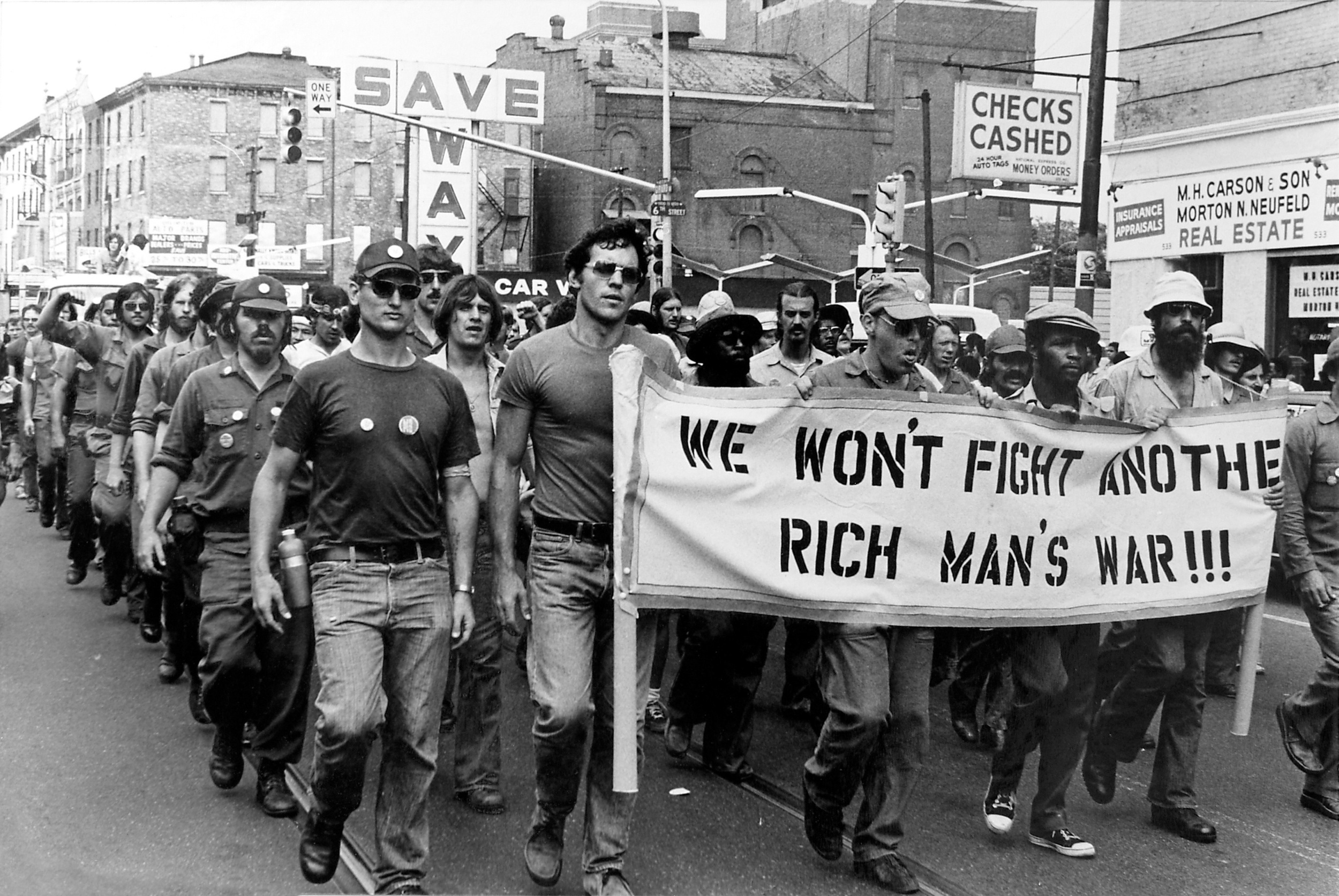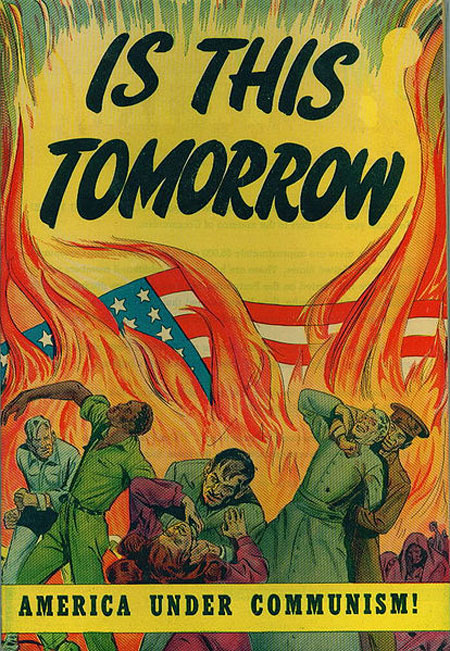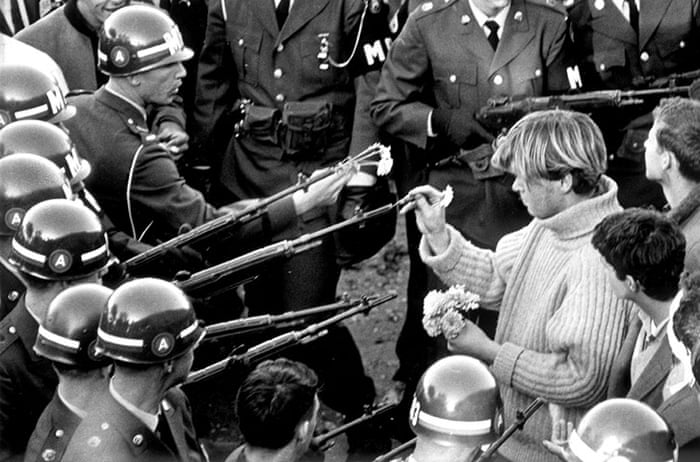The 1960s in America
are characterized in history books by hippie culture, Vietnam War protests, and
overall social rebellion, when in reality this counterculture movement was made
up of the minority. Bob Dylan represented this minority through his powerful
and passionate folk songs, especially “Masters of War”. In this repetitive song
he called out the politicians and business men who stood to profit from war but
had never actually seen a battle firsthand. Rebels and hippies all over the
country choose Bob Dylan to be their idol as they publicly declared their
hatred of war through burning draft cards and putting flowers in the barrels of
guns at protests. Bob Dylan had always been a rebel in his own way, he dropped
out of college to move to New York City and become a musician. When he gained
recognition in a New York Times article, fans flocked to his music and his
messages to stop violence and promote peace. Bob Dylan’s messages of peace came
at a time when Americans were unsure if America should be involved in a war in
Vietnam. Dylan's political movement gained traction throughout the war, but “Masters of War”
was written in 1962-1963 and was one of the first songs people rallied behind
to protest the war. The kairos, translating to the timeliness, of this song was
perfect for its era because when people were unsure of how they felt about
another war, Bob Dylan criticized not only the war, but those who supported the
war for their own personal benefit. His lyrics were so powerful and influential that some compared him to a poet and argued that he deserved the Nobel Prize in Literature. “Masters of War” was the song that launched
Bob Dylan into the role as the original protest singer and he went on to define
a decade of protests and rebellion against “the man”.
Tuesday, September 30, 2014
Stasis Theory- Flower in the Gun
We define the photograph of the flowers in the gun as a protest strategy to promote peace. Backlash against the Vietnam War paved the way for anti-war protests in the United States. Protesters started putting flowers into the barrels of guns as a non-violent way to demonstrate in front of military personal and riot police. Flower in the gun was a new strategy and was coined by American beat writer Allen Ginsberg as "Flower Power". Flower power became a popular movement in the United States especially with the Hippies. Flower in the gun is a great example of a meaningful non-violent way of protest. Flowers represent love, peace and serenity, the main focuses of the anti-war movement. It presented the positives of the movement, while not acting in harmful ways. Flower power was implemented and ingratiated into the Hippie culture. Hippie clothing transformed into flowery vibrant colors to convey their message of peace and nature. The images of flowers contributed to the symbolism of the anti-war movement during the 1960s.
The Kairos Behind the Flower in the Gun
 The 1960s were a turbulent time for America. There was a rise of counter cultures and the backlash from the main stream. One of the polarizing issues of the day was the Vietnam war. The Vietnam war caused a massive social divide between the disenfranchised youth and the so called "silent majority". Most Americans thought that the antiwar protestors were at best foolish, naive children and at worst traitors.The antiwar protestors were appalled by the loss of life in Vietnam and the senselessness of the conflict. Many felt that they were not being represented and went to the streets to protest. The photograph was taken at one of those protests. On October 21st 1967, thousands of antiwar protestors converged on the Pentagon. The photograph, taken by Marc Riboud, was a juxtaposition between the ideals of violence and peace. The stark contrast between the dangerous guns pointed at the woman's face and the harmless flower she is offering in return fit well in the time of turmoil. At the protest many were arrested and beaten by those guarding the Pentagon. The continued violence against unarmed protestors really helped elevate the images emotional effect. The government's overreaction to the protestors led many to sympathize with the protestors. The violence and strife of the 1960's helped accentuate the photograph's message of peace.
The 1960s were a turbulent time for America. There was a rise of counter cultures and the backlash from the main stream. One of the polarizing issues of the day was the Vietnam war. The Vietnam war caused a massive social divide between the disenfranchised youth and the so called "silent majority". Most Americans thought that the antiwar protestors were at best foolish, naive children and at worst traitors.The antiwar protestors were appalled by the loss of life in Vietnam and the senselessness of the conflict. Many felt that they were not being represented and went to the streets to protest. The photograph was taken at one of those protests. On October 21st 1967, thousands of antiwar protestors converged on the Pentagon. The photograph, taken by Marc Riboud, was a juxtaposition between the ideals of violence and peace. The stark contrast between the dangerous guns pointed at the woman's face and the harmless flower she is offering in return fit well in the time of turmoil. At the protest many were arrested and beaten by those guarding the Pentagon. The continued violence against unarmed protestors really helped elevate the images emotional effect. The government's overreaction to the protestors led many to sympathize with the protestors. The violence and strife of the 1960's helped accentuate the photograph's message of peace.
"Masters of War"- Analyzing Bob Dylan's Rhetorical Message
 “Masters of War,”
written by Bob Dylan in 1962-1963,
targeted the United States government regarding the Vietnam and Cold Wars. He chastised the leaders of the United
States for misleading the American citizens into believing that we, as a nation,
could actually win a world war. Additionally, Dylan called out the leaders in
Washington, claiming that they constantly pushed for war, as long as they did
not have to do the fighting. These politicians “hid behind their desks…
fastening the trigger, for others to fire” as they sent unsuspecting, young men
into combat.
“Masters of War,”
written by Bob Dylan in 1962-1963,
targeted the United States government regarding the Vietnam and Cold Wars. He chastised the leaders of the United
States for misleading the American citizens into believing that we, as a nation,
could actually win a world war. Additionally, Dylan called out the leaders in
Washington, claiming that they constantly pushed for war, as long as they did
not have to do the fighting. These politicians “hid behind their desks…
fastening the trigger, for others to fire” as they sent unsuspecting, young men
into combat.
When
reviewing history, it is obvious that both the Cold War and the Vietnam War
actually happened. The Cold War resulted from the tense relationship between
the US and USSR regarding communism, eventually leading to a competition in
multiple areas, including space travel and weapon build-up. The Cold War raged
on, from the end of World War II up until the fall of the Soviet Union, never
resulting in actual combat. On the other hand, the United States actually sent
soldiers to help the South Vietnam defeat the northern, Communist
Viet Minh party and southern Viet Cong regime. The conflict lasted from 1954 up until 1973, with more
than three million casualties, half of which were civilian deaths. The United
States became involved with the Vietnam War in an attempt to contain Communism
and prevent the Viet Minh from gaining control of the entire country.
 In accordance
with Dylan’s message, it seems that both the Cold War and Vietnam War did not
have any value nor did they improve the quality of life in the United States. In
fact, the Cold War led to the Red Scare,
which initiated a sense of anxiety throughout the country. Additionally, when
In accordance
with Dylan’s message, it seems that both the Cold War and Vietnam War did not
have any value nor did they improve the quality of life in the United States. In
fact, the Cold War led to the Red Scare,
which initiated a sense of anxiety throughout the country. Additionally, when
Subscribe to:
Posts (Atom)


